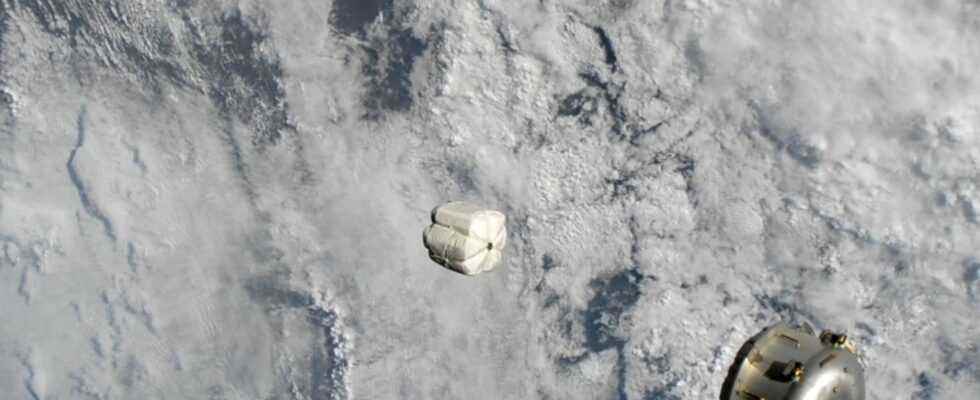For the first time, on July 2, the Bishop airlock installed on the international space station served to eject a large specialized “trash bag”. More than 75 kg of waste in an airtight device, which will disintegrate within a few months in the atmosphere. An answer to reflections on ISS waste?
In any case, the subject is more serious than it seems…
Have you thought about taking out the trash?
In more than twenty years of operation, the routine within the International Space Station has become quite unchanging. When a Progress, ATV or Cygnus cargo ship arrives and docks with the ISS, its hold is quickly emptied of its provisions and scientific experiments to make way for many bags containing the astronauts’ waste.
And that includes towels, clothes, a lot of packaging, but also elements of experiments that are no longer used, samples that have already been analyzed, and even some experiments themselves. But all this takes space, and mass. With the advent of SpaceX’s reusable freighters, there’s also a lot more supplies going “up” than precious cargo “going down.”
It’s no secret: the international station is quite crowded, after 22 years of occupation. Thus, the first shipment of 78 kg of waste in a specialized bag and via the Bishop commercial airlock on July 2 is an additional step to ensure astronauts have a good working space.
No spacewalkers…
Installed in 2020 on the International Space Station, the Bishop airlock is not owned by an agency but by Nanoracks, thanks to private funding and a partnership with NASA, to which the company provides services. Bishop can eject small satellites, easily expose experiments to the vacuum of space, or push larger payloads away from the station, like this massive “garbage bag.”
On July 2, it was still only a demonstration: in addition to some dirty clothes and towels, the bag was above all filled with foam. In the future, astronauts will be able to fill it with 270 kg of waste! With its size and density, it will only remain in low orbit for a few months before disintegrating in the upper layers of the atmosphere with its load.
Sorting out, like in the 80s
The four long-term occupants of the non-Russian segment of the station produce at least 2.5 tons of waste a year, and that’s not counting the periods when there are more of them – a significant increase made possible thanks to the new manned vehicles… Not to mention the dozens, even hundreds of experiments and sometimes the personal effects that remain up there for years or decades.
In 2018, astronaut Alexander Gerst found in a drawer a pocket containing diskettes intended for the very first expedition in November 2000! This is only one example among many, but the Bishop airlock may allow for a major cleaning.
However, if this device is new on the ISS, it should be noted that the fact of throwing its waste “overboard” (unacceptable on Earth but interesting if done intelligently in orbit) was a Russian specialty during the 80s and 90s Salyut 6 and 7, as well as Mir, had a small specialized airlock for waste, which was ejected once a week. Specialist and astrophysicist Jonathan McDowell has listed 360 orbital objects in this category throughout history. Until last Saturday, there were none left.
Source : Nano racks

10